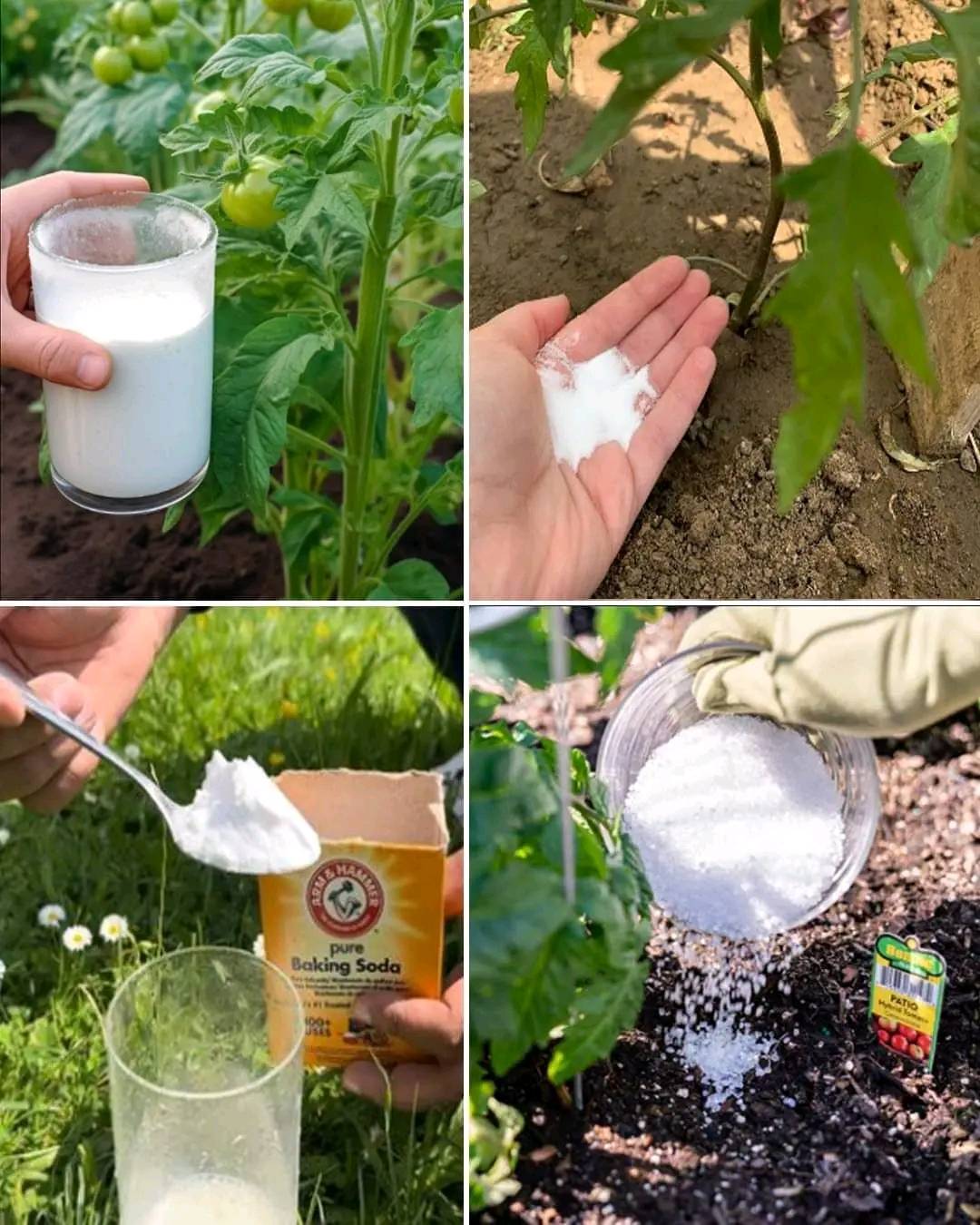Baking soda, or sodium bicarbonate, is a common household item with a variety of uses beyond the kitchen. In the garden, baking soda can be a safer and more affordable alternative to synthetic chemicals. It is non-toxic, environmentally friendly, and offers multiple benefits to plants and soils. Whether you’re looking to control pests, prevent fungal diseases, or adjust soil pH, baking soda can be a valuable tool in your gardening kit.
Why Choose Baking Soda for Your Garden?
- Natural and Non-Toxic:
Baking soda is a safer option for plants, pets, and the environment compared to harsh synthetic chemicals. Its mild alkalinity makes it useful for dealing with various garden issues without harming beneficial insects or microorganisms. - Cost-Effective:
Baking soda is inexpensive and widely available. For budget-conscious gardeners, it provides an effective alternative to pricier chemical treatments while offering similar, if not better, results. - Versatile Uses:
Its versatility is one of its key advantages. Baking soda can be used to control pests, manage fungal diseases, alter soil pH, and more. By having this simple substance on hand, you can tackle a wide range of garden problems.
How to Use Baking Soda in Your Garden
- Control Powdery Mildew:
Powdery mildew is a common fungal disease that affects a wide variety of plants, leaving a white or gray powdery substance on leaves. To combat this, baking soda can be your ally. How to Use:
- Mix 1 tablespoon of baking soda with 1 quart of water and a few drops of liquid soap (the soap helps the mixture adhere to the leaves).
- Spray affected plants once a week, particularly during humid weather, which fosters the spread of mildew.
- Manage Fungal Diseases:
Fungal infections like black spot on roses or damping-off in seedlings can be devastating for your garden. Baking soda helps manage these diseases by altering the pH on the surface of the leaves, creating an environment hostile to fungi. How to Use:
- For seedlings: Lightly sprinkle baking soda on the soil surface to prevent damping-off, a condition that often kills young plants.
- For fungal infections like black spot on roses: Apply a solution of baking soda directly to infected areas to inhibit the spread of the fungus.
- Natural Pesticide:
Aphids, spider mites, and other pests can wreak havoc on your plants. Baking soda can help deter these unwanted visitors. How to Use:
- Mix 1 teaspoon of baking soda, 1 tablespoon of vegetable oil, and a few drops of liquid soap in 1 quart of water.
- Spray affected plants weekly, or reapply after rainfall, to deter aphids, spider mites, and other soft-bodied insects.
- Boost Tomato Plants:
Tomatoes are prone to several issues, such as acidic soil and blossom end rot. Baking soda can help by reducing soil acidity and preventing this calcium deficiency-related problem. How to Use:
- Sprinkle a small amount of baking soda around the base of your tomato plants. This will reduce the acidity of the soil, helping your tomatoes grow healthier and produce better fruit.
- Weed Control:
Weeds are an inevitable challenge for gardeners. Baking soda can be a natural, effective method to discourage their growth, especially in hard-to-maintain areas like driveways and walkways. How to Use:
- Apply baking soda directly to cracks in driveways, walkways, or between patio stones. It naturally deters weeds by increasing the salinity of the soil, making it difficult for weeds to grow.
- Soil Amendment:
Some plants, such as roses and lavender, thrive in neutral to slightly alkaline soils. If your soil is too acidic, baking soda can be used sparingly to raise the pH. How to Use:
- Sprinkle a small amount of baking soda over the soil and work it in gently. Be careful not to overapply, as too much baking soda can make the soil too alkaline, which can harm certain plants.
Tips for Using Baking Soda Safely and Effectively
While baking soda is generally safe, there are some guidelines you should follow to ensure it’s used effectively without harming your plants:
- Dilute Properly:
Always follow dilution instructions carefully to avoid over-concentration, which could harm plants. Baking soda is alkaline, and applying it too strongly can damage leaves or disrupt soil pH balance. - Test on a Small Area:
Before applying baking soda solutions broadly, test it on a small part of the plant. This will help you ensure that the plant reacts well to the treatment and that there are no negative side effects. - Monitor Plant Reactions:
After applying baking soda treatments, observe how your plants respond. If you notice any signs of stress (such as leaf discoloration or wilting), adjust the concentration of the solution or the frequency of application.
Conclusion: Baking Soda, a Gardener’s Friend
Baking soda offers a safer, cheaper, and environmentally friendly way to take care of your garden. Its natural properties make it ideal for controlling pests, preventing fungal diseases, and even boosting the health of your plants. With these simple tips and techniques, you can harness the power of baking soda to keep your garden thriving — all without resorting to harmful chemicals.
Incorporating baking soda into your gardening routine allows you to take control of your plant care while promoting sustainability. From deterring pests to enriching the soil, baking soda is a gardener’s versatile, affordable, and effective solution.
